Hostas are edible and delicious. They might be in your garden, but they're also a traditional food in Japan. They taste like a spear of lettuce crossed with asparagus.
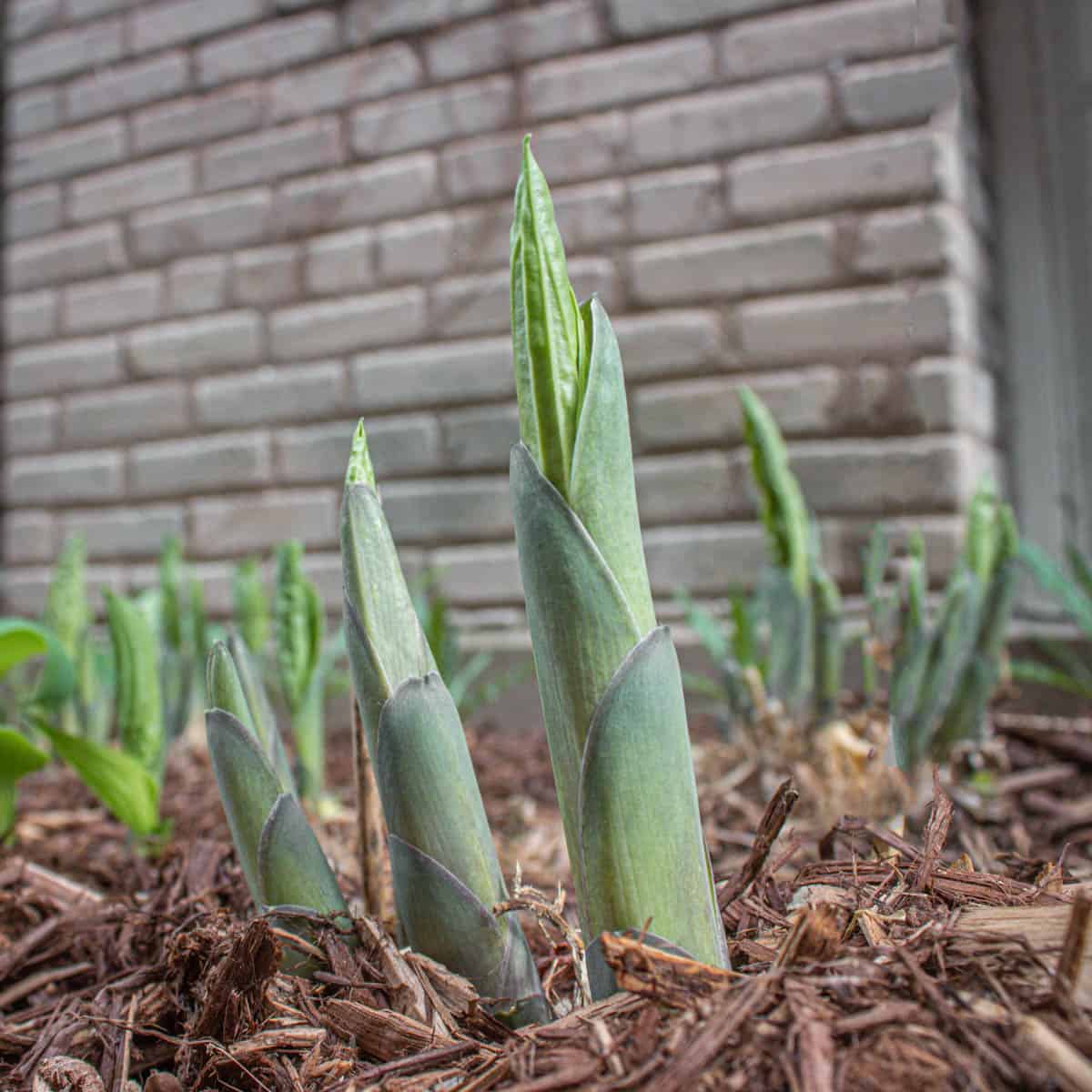
No, no, you can't eat my Hostas! Was the reaction I got asking my friends with gardens if I could eat them. I didn't understand. I'd never even noticed them before. Sure, they look ok after they grow and the leaves unfurl, but they're going to look great on a plate, too, and doesn't eating them sound fun?
After I found out you can eat them a few years ago, I was dead-set on getting some, and if I had to sneak up to a yard with a scissors at night, I was prepared do it, the foraging gods willed it.
Once things started thawing, around April and May in Minnesota, I asked around. Everyone seemed to have them, but only one person was nice enough to bring me some shoots, they varied in size, some large, some tiny.
I wasn't all that impressed with the size, but they tasted nice and mild, kind of like a tightly wound butterhead lettuce that you can cook as an asparagus-type vegetable. Anne, if you ever end up reading this, thank you, and I miss you.

Then, as dumb luck would have it, while I was going out the door one day I passed through the garden area in between the two apartment buildings I live in and noticed some different hosta shoots just emerging.
These were different, better: big and fat, looking like a vegetable. I resisted the temptation to pick from the apartment complex though, since I didn't know for sure if they had been sprayed or something to keep them looking as "natural" as they looked.
Emboldened, I called some more friends and asked if they knew anyone with some more shoots. After a little more pushing, (and 20 bucks) got me a nice bagful of fat, un-sprayed shoots to take home and eat.
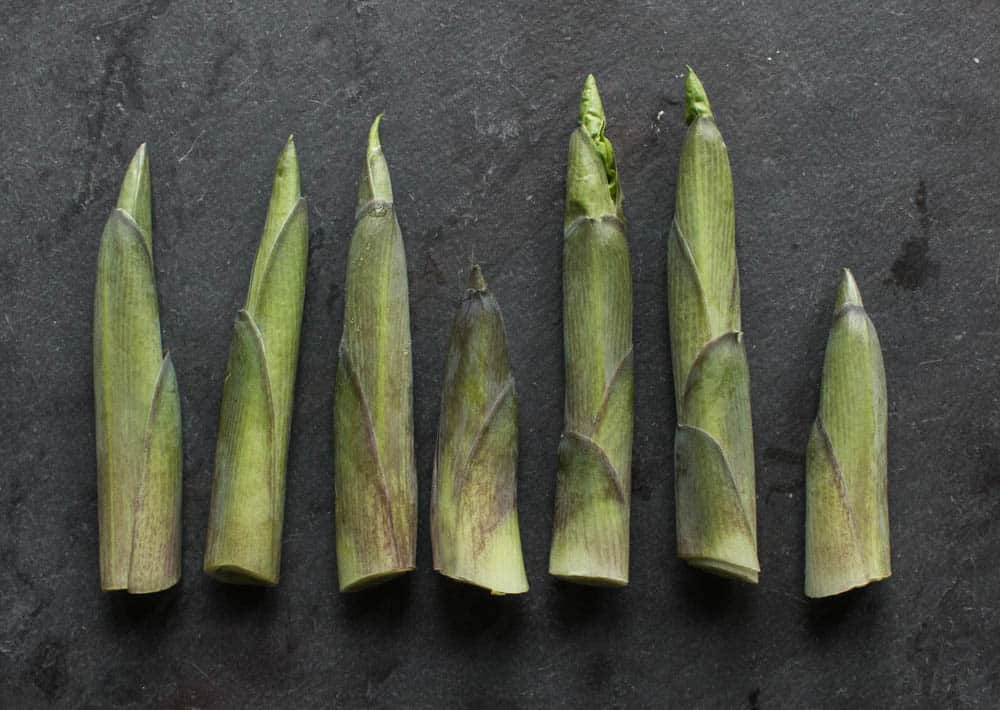
Cultivation and consumption in Japan
Hosta's might seem like a novelty but, like a lot of the things I root around for, they've been enjoyed in the Far East for a long time. In Japan they're known as Urui, and are described as a type of Sansai: an umbrella term for wild plants that used to be harvested from the mountains.
The Sansei description is similar to how Northern Latin America (Mexico) uses the term Quelites to describe a number of different small wild plants. Greeks use the word horta as a similar catch-all term for many wild green things.
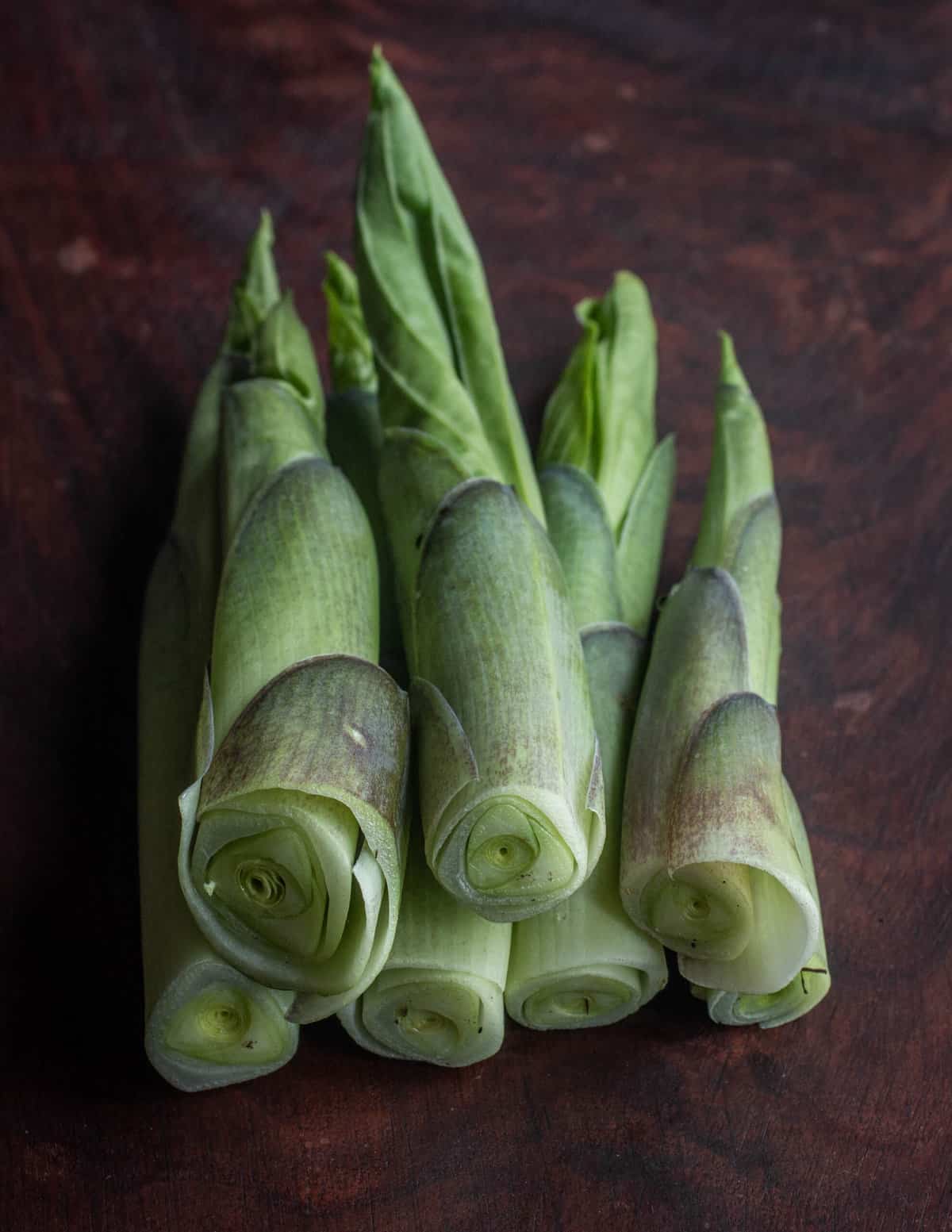
Harvesting
One big question I had was if you could possibly get a second growth if you mow the shoots down early.
It would be a lot easier for me to convince people to let me pick some of their hosta shoots of they know they won't have big bald spots in the middle of their landscaping. I also know some plants, like comfrey, can keep giving regularly throughout the growing season if trimmed regularly.
The overwhelming reaction to cutting shoots out of someone's yard was a strange look, followed by a firm "no", and, I get it: no one wants to have a spotty looking yard. I think there might be a happy middle ground though. I did see one page with some promising info, too.
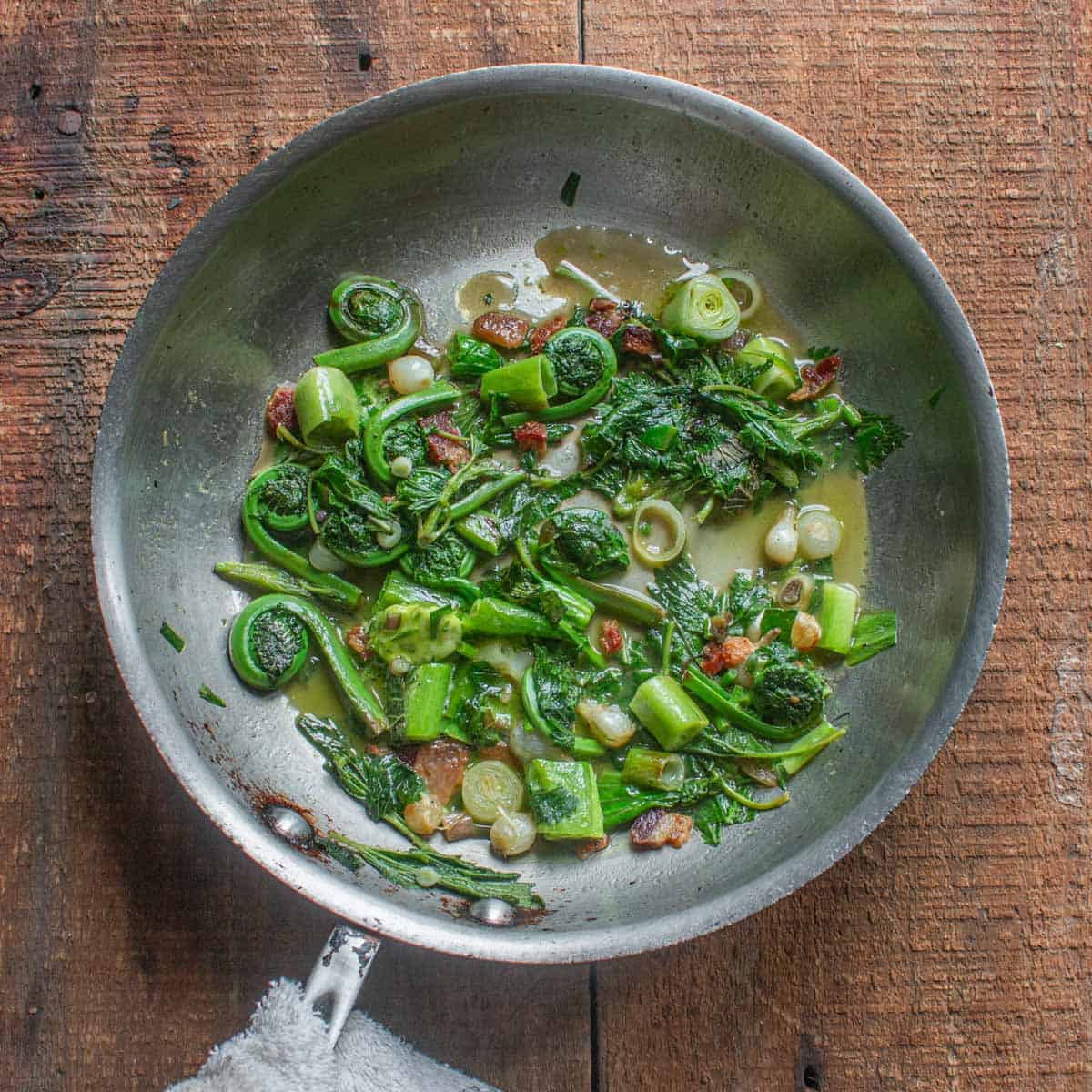
According to Scottish Forest Garden.com, the first flush of leaf shoots can be cut down to encourage a second flush.
"It is possible to harvest the whole first flush of leaves of an established plant without killing it: ornamental hosta growers will sometimes ‘mow’ their plants to get a second flush of fresh, attractive leaves."
After watching the deer eat mine and seeing them come back, I can confirm that.
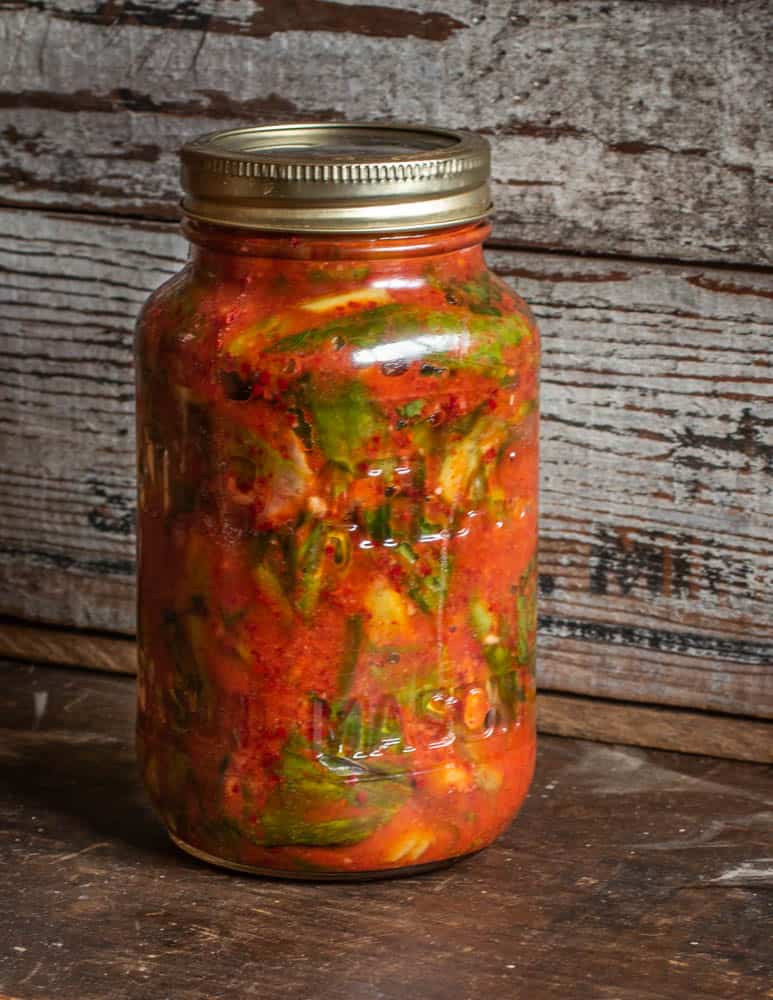
Storage
Just like any other young delicate green thing, these should be kept in the fridge, mine keep for one-two weeks in a plastic zipper bag with a few holes punched in it for air, along with a damp cloth or paper towel.
Taste
Lastly, the most important question. Yes they look cool, yes you can ingest them, but do they actually taste good? I say absolutely, positively yes, they were excellent, I prefer them to milkweed shoots.
All of the hosta species I tried (everything I've read says every species is edible) had a flavor like mild lettuces, the texture is where the money is though.
When the leaves are tightly coiled up they keep a little of their crunch, kind of like a spring onion but without any of the sharpness you would expect from an allium.
The method I liked the best was a quick-hot sear in a pan to brown them and caramelize the outside, which brings out a bit of sweetness. Cooked very fast, you can brown them, creating depth of flavor, as well as keeping the inside crisp: the best of both worlds.
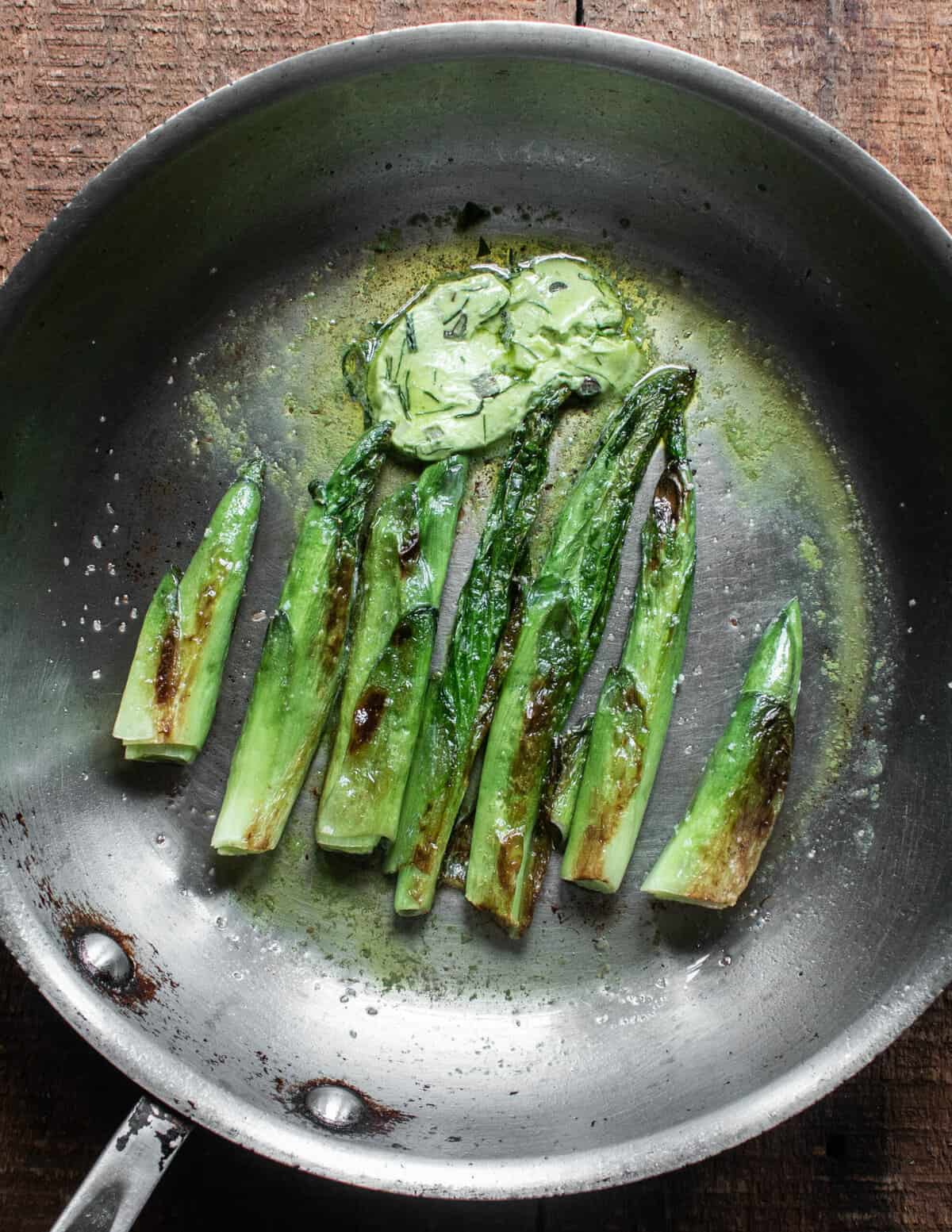
Cooking
I like a hot, fast sear with these. I did try other techniques like slow cooking, braising and roasting, but they came out a bit soft for me.
Like a lot of other things, when in doubt, research the culture that traditionally cooks whatever the ingredient in question is in this case, for me, it was Japan. A quick google for "Urui" should do you just fine, or try out the hot and fast pan sear I'm outlining below.
You can bet, when I get a garden (hopefully next year) I'll be growing a couple species as edible landscaping, until then I'll just have to keep begging my friends for their shoots.
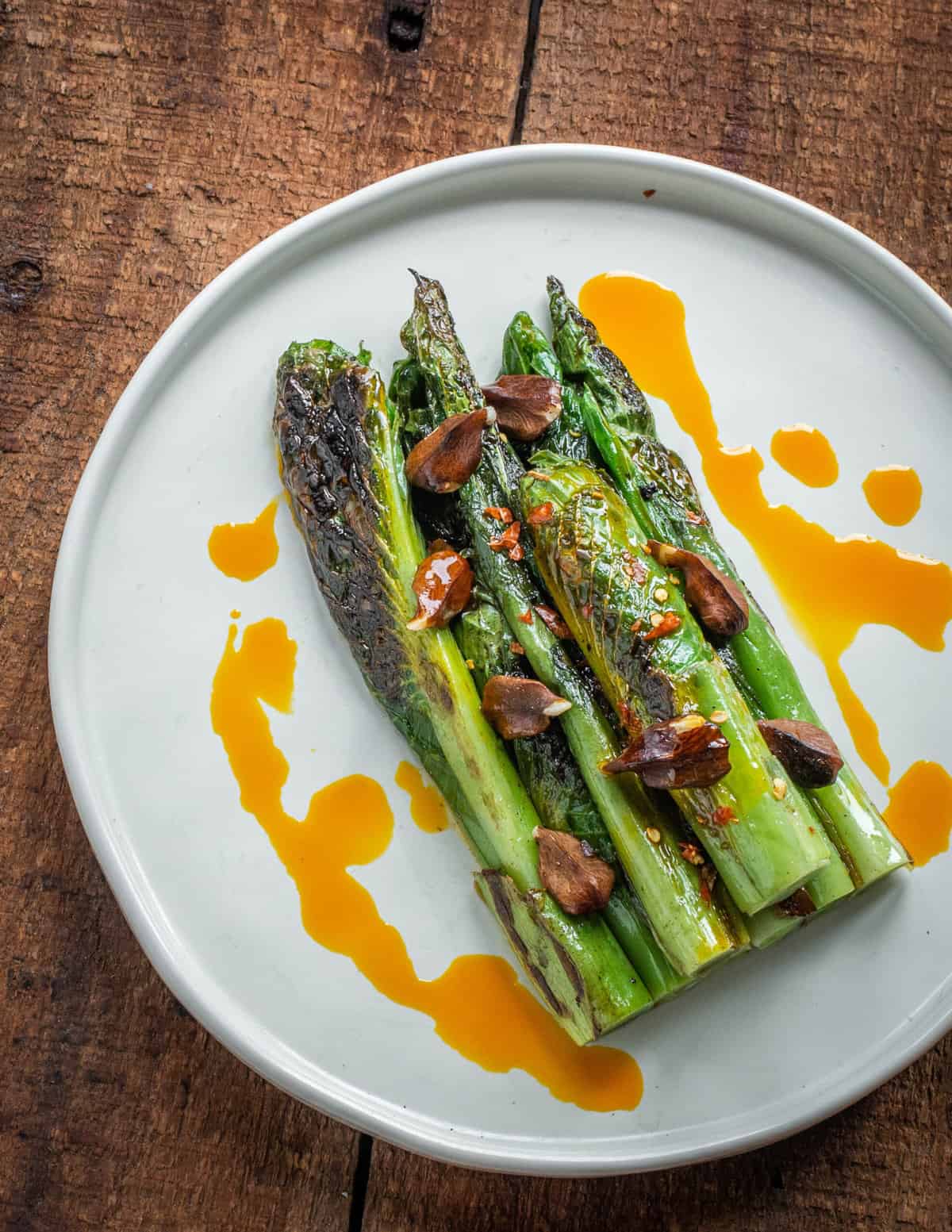
Hosta flowers and mature leaves
Yep, you can eat those too, with some caveats.
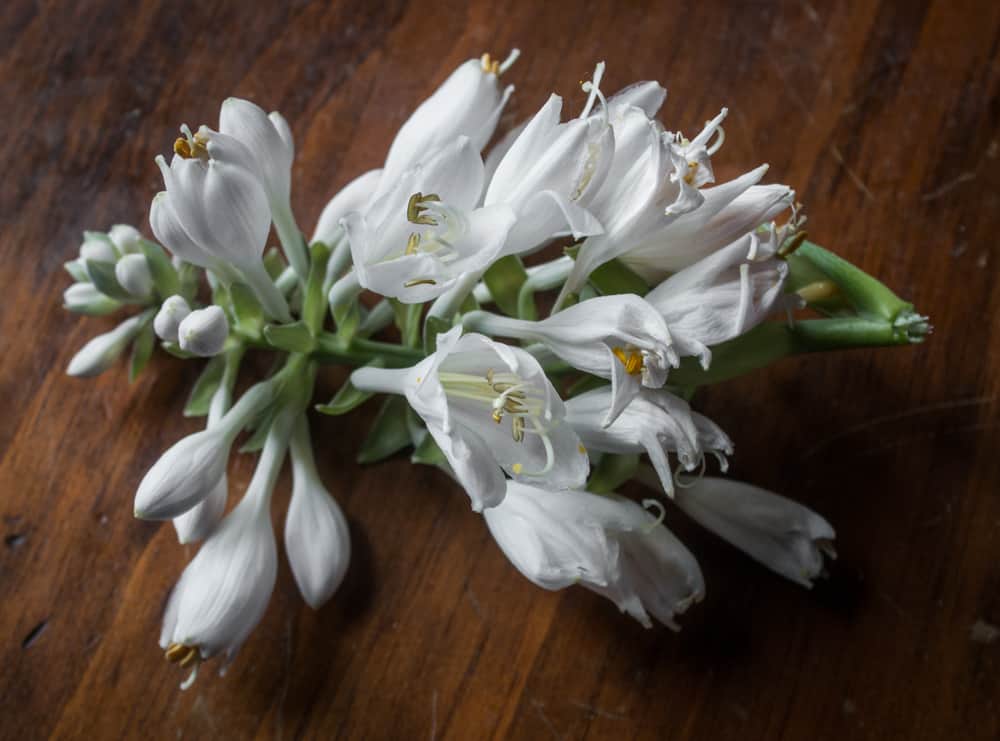
As I watched the plants grow and mature through the Spring, I wondered if there would be any way to keep enjoying them as they matured, or without cutting the whole shoots.
The plants send up flower shoots after the leaves unfurl, they have a fantastic, sweet flavor, delicate, a bit like daylily flowers. They do have a bit of astringency to them, but you won't notice it much in a salad, just don't eat them by the handful.
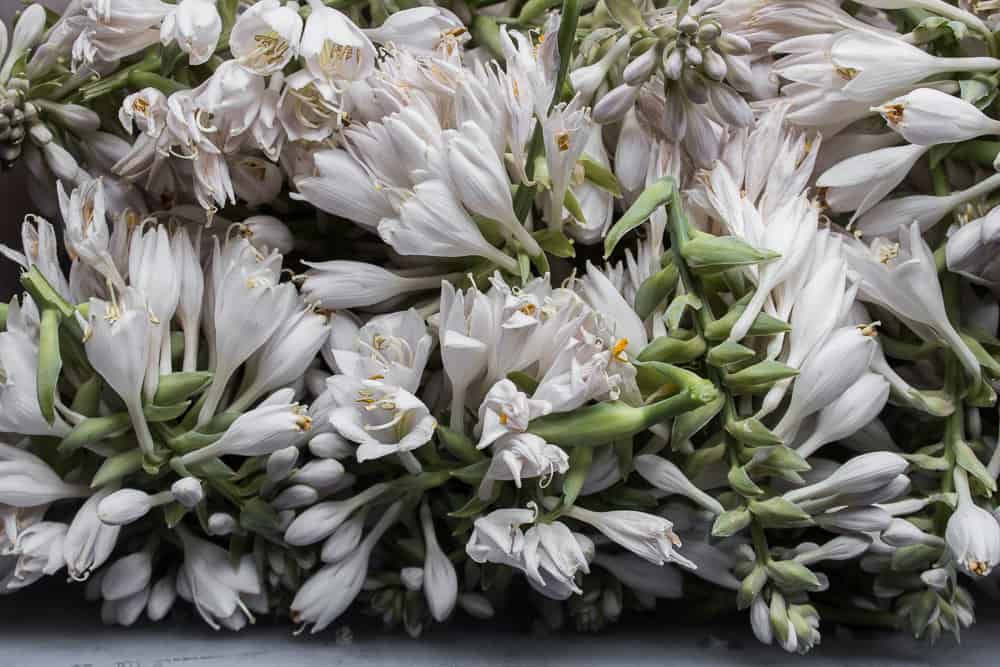
Mature leaves
The mature leaves I haven't tried yet, but a number of sources I saw online said you could cook them for a while until soft, and then use like a wilted green. I'm very skeptical of this method though since the leaves get super fibrous as they age. Once I try some, I'll share the results.
Have you cooked with hosta shoots or another part of the plant I missed? I'd love to hear about it.
Pan Seared Hosta Shoots with Ramp Butter
Equipment
- Heavy saute pan or cast iron skillet
Ingredients
- 8 ounces fresh hosta shoots as young and tightly coiled as possible, cleaned, rinsed and dried if needed
- cooking oil, 1 tablespoon
- Kosher salt and fresh ground black pepper to taste
- 3 Tbsp Ramp butter *see note
- ¼ cup dry white wine chicken or vegetable stock can be substituted
- Dash of fresh lemon juice for finishing
Instructions
- Heat the oil in a saute pan or cast iron skillet until lightly smoking.
- Add the shoots and cook quickly, allowing them to brown lightly, keeping the heat at medium-high. Brown them on both sides.
- When the shoots are browned deglaze the pan with the wine, add the ramp butter and melt.
- Remove the pan from the heat and swirl it, turning the hostas over in the sauce that forms.
- Taste the sauce and season with a pinch of salt and pepper if you think it needs it. Add the dash of lemon juice.
- Transfer the hostas to a plate, mounding them up into a pyramid to hold heat if you can. Spoon the sauce over the mound of hosta shoots and serve.
Video
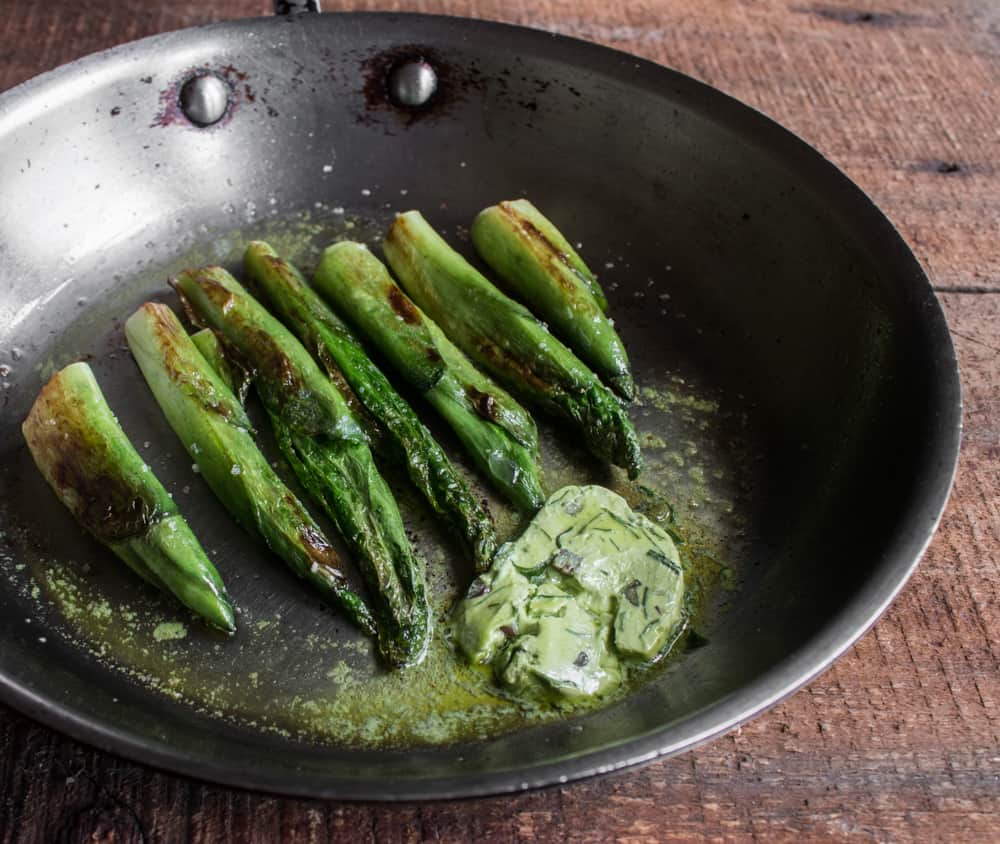

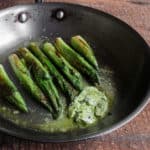
Joan
I have been eating hosta shoots for a few years and love them in my ramen, stir fried, quick seared, BBQ and steamed. I am wondering if the fresh hosta sprouts can be frozen. I have a lot of hosta patches and can't eat all the young sprouts (my favourite) can I freeze my excess shoots?
Alan Bergo
Hi Joan. Yes you could freeze excess shoots. I'd probably blanch them quickly in salted water, dry, and vacuum seal. It's possible they could be frozen from raw but I haven't tried it yet.
cat
I've been eating Hostas for years! I use the leaves before the plant flowers as wraps. Some varieties produce huge leaves and I call these Hosta submarines! As the leaves toughen, steaming helps. If really fibrous, best juiced. Stems are best stuffed like celery, either with dip or nut butter (or alternatively juiced). I have some recipes on my websites if you'd like to take a peek-see. Ty for sharing your foraged recipes! ~Cat 🙂
Ravenna Helson
I have made "hosta roll ups" with recently unfurled hosta leaves. They are filled with a small slice of provolone, prociutto and a dab of mustard. sometimes I include a leaf of sorrel or sage. Alternately, a plain ricotta stuffing (with dried herbs or cilantro) has been great.
I love this website. Thanks,
Ravenna in Milwaukee
Alan Bergo
Thanks Ravenna. Great idea!
Jonathan
Hi, I'm glad to see the good word about eating hostas making the rounds. From the photos here, I think you are harvesting them sooner than needed, though it could be a texture preference. I harvest mine when they are a bit more sprouted, either just taller and still in the sprout shape, or even after they have begun to unfurl but still not totally opened up to the "mature" shape. We're talking just a few days difference. I like giving them a little more time since then there's more to eat! 🙂 I recommend removing the slightly darker outer layer at the bottom of the shoot, which is has bit of bitterness.
I describe them as tasting a lot like asparagus with a texture closer to spinach. The batch I cooked a couple days ago, I chopped them up and sautéed them in olive oil with lots of minced garlic and a healthy dose of salt. Delicious.
Alan Bergo
Hi Jonathan. There's a few reasons why I harvest them tightly coiled. First, it's when they're harvested in Japan, as the 3 people from Japan I cooked hostas for confirmed yesterday. Secondly, if I tell people to let them get bigger, we both know that hostas grow (and get tough) quickly. The more wiggle room I give people, the better chance of user-error, and then I get a bunch of emails complaining about how I instructed someone to eat a vegetable that's tough.
Jayneann Smith
Can i take them apart an dehydration them?
Alan Bergo
Yes that wouldn't harm them at all. They might get a little tough though.
Shannan
Every time I have a question/wonderment on my foraging trails, I always look you up for my answers! I will actually google the plant name followed by forager chef just so i can get straight to what I want to know. I think we would be good friends in the real life! ;). We seem to gravitate to the same plants often, and have similar ideas of how to make them... only yours are probably way more cool! Thank you for publishing your recipes.... you're the best!
Carol Guthrie
I feel so lucky to have stumbled across this website! I love foraging, but have learned so much just in the last 30 minutes. Thank you! Thank you especially for noting that hosta flowers are edible (and hosta in general--might as well beat the deer to them). In general, I dislike the flowers and remove them as soon as they appear, both in my own garden and those of my clients (I am a landscape designer). I do use them as cut flowers (especially the fragrant ones)...but eating them! Even better!
Alan Bergo
Hi Carol, yes I love these and have to battle the deer for them too. An important thing to remember about hosta flowers is that they will taste much better dressed, raw they make my throat a little scratchy. That reaction is usually an individual sensitivity and vary from person to person-just something to keep in mind if you try one and don't like it right away.